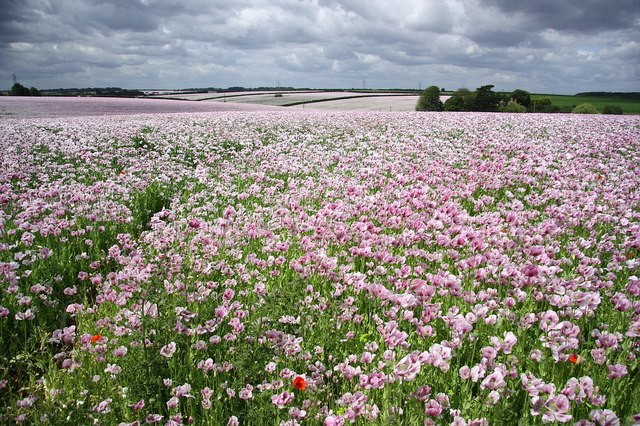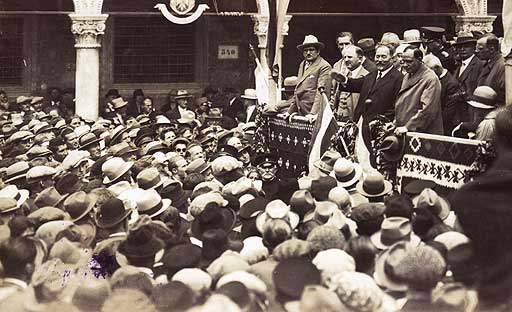|
Metodija Andonov-Čento
Metodija Andonov-Čento ( mk, Методија Андонов-Ченто; bg, Методи Андонов-Ченто) (17 August 1902 – 24 July 1957) was a Macedonian statesman, the first president of the Anti-Fascist Assembly of the National Liberation of Macedonia and of the People's Republic of Macedonia in the Federal People's Republic of Yugoslavia after the Second World War. In Bulgaria he is often considered a Bulgarian. Early life Metodi Andonov was born in Prilep, which was then part of the Manastir Vilayet of the Ottoman Empire. His nickname comes from the Italian word for "hundred" - ''cento'' from a joke with his childhood friends. He was the first healthy child of Andon Mitskov and Zoka Koneva, as his older siblings bore diseases. His father was from Pletvar, while his mother was from Lenište. As a child, he worked in opium poppy fields and harvested tobacco. After the Balkan Wars in 1913 the area was ceded to Serbia, where a serbianization was implemented, w ... [...More Info...] [...Related Items...] OR: [Wikipedia] [Google] [Baidu] |
Prilep
Prilep ( mk, Прилеп ) is the fourth-largest city in North Macedonia. It has a population of 66,246 and is known as "the city under Marko's Towers" because of its proximity to the towers of Prince Marko. Name The name of Prilep appeared first as ''Πρίλαπος''. The old fortress was attached to the rocky hilltop, and its name means “stuck” ''on the rocks'' in Old Church Slavonic. It was mentioned by John Skylitzes in relation with Samuel of Bulgaria, who died here in 1014. In other languages is: * bg, Прилеп, ''Prilep'' * rup, Pãrleap * Serbo-Croatian: ''Prilep'' / Прилеп * tr, Pirlepe, or ''Perlepe'' * al, Përlep or ''Përlepi'', or ''Prilep'' or ''Prilepi'' * Greek: ''Prilapos'', Πρίλαπος * Latin: ''Prilapum'' Economy Prilep is a centre for high-quality tobacco and cigarettes, as well as metal processing, electronics, timber, textiles, and food industries. The city also produces a large quantity of Macedonian Bianco Sivec (pure whit ... [...More Info...] [...Related Items...] OR: [Wikipedia] [Google] [Baidu] |
Opium Poppy
''Papaver somniferum'', commonly known as the opium poppy or breadseed poppy, is a species of flowering plant in the family Papaveraceae. It is the species of plant from which both opium and poppy seeds are derived and is also a valuable ornamental plant, grown in gardens. Its native range is probably the eastern Mediterranean, but is now obscured by ancient introductions and cultivation, being naturalized across much of Europe and Asia. This poppy is grown as an agricultural crop on a large scale, for one of three primary purposes. The first is to produce seeds that are eaten by humans, commonly known as poppy seed. The second is to produce opium for use mainly by the pharmaceutical industry. The third is to produce other alkaloids, mainly thebaine and oripavine, that are processed by the pharmaceutical industry into drugs such as hydrocodone and oxycodone. Each of these goals has special breeds that are targeted at one of these businesses, and breeding efforts (including biotec ... [...More Info...] [...Related Items...] OR: [Wikipedia] [Google] [Baidu] |
Member Of Parliament
A member of parliament (MP) is the representative in parliament of the people who live in their electoral district. In many countries with bicameral parliaments, this term refers only to members of the lower house since upper house members often have a different title. The terms congressman/congresswoman or deputy are equivalent terms used in other jurisdictions. The term parliamentarian is also sometimes used for members of parliament, but this may also be used to refer to unelected government officials with specific roles in a parliament and other expert advisers on parliamentary procedure such as the Senate Parliamentarian in the United States. The term is also used to the characteristic of performing the duties of a member of a legislature, for example: "The two party leaders often disagreed on issues, but both were excellent parliamentarians and cooperated to get many good things done." Members of parliament typically form parliamentary groups, sometimes called caucuse ... [...More Info...] [...Related Items...] OR: [Wikipedia] [Google] [Baidu] |
Croatian Peasant Party
The Croatian Peasant Party ( hr, Hrvatska seljačka stranka, HSS) is an agrarian political party in Croatia founded on 22 December 1904 by Antun and Stjepan Radić as Croatian Peoples' Peasant Party (HPSS). The Brothers Radić believed that the realization of Croatian statehood was possible within Austria-Hungary, but that it had to be reformed as a Monarchy divided into three equal parts – Austria, Hungary, Croatia. After the creation of Kingdom of Yugoslavia in 1918, Party requested for the Croatian part of the Kingdom to be based on self-determination. This brought them great public support which culminated in 1920 parliamentary election when HPSS won all 58 seats assigned to Croatia. In 1920, disgruntled with a bad position of Croats in the Kingdom, the party changed its name into Croatian Republican Peasant Party (HRSS) and started advocating secession from the Kingdom and the establishment of ''"peaceful peasant Republic of Croatia"''. On 1923 and 1925 election, HRS ... [...More Info...] [...Related Items...] OR: [Wikipedia] [Google] [Baidu] |
1938 Yugoslavian Parliamentary Election
Parliamentary elections were held in Yugoslavia on 11 December 1938. The result was a victory for the governing Yugoslav Radical Union, which won 306 of the 373 seats in National Assembly. These would be the last elections held in Yugoslavia before World War II. By the time of the first postwar elections, in 1945, the Communist Party of Yugoslavia was rapidly consolidating power, and the non-Communist opposition boycotted the vote after claiming to have been targeted with severe intimidation."Elections In Yugoslavia", ''The Times'', 9 November 1945 As a result, the 1938 elections would be the last multi-party elections held in Yugoslavia until the Communists gave up their monopoly of power in 1990. Coalitions The Yugoslav Radical Union (JRZ, Jereza) led by PM Milan Stojadinović, form an right-wing to far-right alliance with: *Yugoslav National Party led by Bogoljub Jevtić, *Yugoslav Muslim Organization led by Mehmed Spaho, * Slovene People's Party led by Anton Korošec and ... [...More Info...] [...Related Items...] OR: [Wikipedia] [Google] [Baidu] |
Banovina Of Croatia
The Banovina of Croatia or Banate of Croatia ( sh-Latn-Cyrl, separator=" / ", Banovina Hrvatska, Бановина Хрватска) was an autonomous province ( banovina) of the Kingdom of Yugoslavia between 1939 and 1941. It was formed by a merger of Sava and Littoral Banovina, Littoral Banovinas of the Kingdom of Yugoslavia, banovinas into a single autonomous entity, with small parts of the Drina Banovina, Drina, Zeta Banovina, Zeta, and Danube Banovina, Danube banovinas also included. Its capital was Zagreb and it included most of present-day Croatia along with portions of Bosnia and Herzegovina and Serbia. Its sole Ban of Croatia, Ban during this period was Ivan Šubašić. Background In the Vidovdan Constitution of 1921, the Kingdom of Serbs, Croats and Slovenes had established 33 administrative districts, each headed by a government-appointed prefect. Both the Vidovdan Constitution in general and the administrative districts in particular were part of the design of Nikola Pa ... [...More Info...] [...Related Items...] OR: [Wikipedia] [Google] [Baidu] |
Vladko Macek
Vlatko ( sr-Cyrl, Влатко) is a masculine given name of South Slavic origin. It may refer to: *Vlatko Andonovski (born 1976), football manager * Vlatko Blažević (born 1994), Croatian football player * Vlatko Čančar (born 1997), Slovenian professional basketball player *Vlatko Đolonga (born 1976), Croatian football defender *Vlatko Drobarov (born 1992), Macedonian professional footballer *Vlatko Dulić (1943–2015), Croatian theatre, TV and film actor, theatre director *Vlatko Glavaš (born 1962), Bosnian football coach and a former player * Vlatko Gošev (born 1974), retired Macedonian football midfielder *Vlatko Grozdanoski (born 1983), Macedonian footballer *Vlatko Hercegović (1428–1489), the second and the last Herzog of Saint Sava *Vlatko Ilievski (1985–2018), Macedonian pop rock singer and actor *Vlatko Konjevod (1923–2005), Yugoslav and later Bosnian football manager and player *Vlatko Kostov (born 1965), former Yugoslav and Macedonian football midfielder * ... [...More Info...] [...Related Items...] OR: [Wikipedia] [Google] [Baidu] |
Novi Sad
Novi Sad ( sr-Cyrl, Нови Сад, ; hu, Újvidék, ; german: Neusatz; see below for other names) is the second largest city in Serbia and the capital of the autonomous province of Vojvodina. It is located in the southern portion of the Pannonian Plain on the border of the Bačka and Syrmia geographical regions. Lying on the banks of the Danube river, the city faces the northern slopes of Fruška Gora. , Novi Sad proper has a population of 231,798 while its urban area (including the adjacent settlements of Petrovaradin and Sremska Kamenica) comprises 277,522 inhabitants. The population of the administrative area of the city totals 341,625 people. Novi Sad was founded in 1694 when Serb merchants formed a colony across the Danube from the Petrovaradin Fortress, a strategic Habsburg military post. In subsequent centuries, it became an important trading, manufacturing and cultural centre, and has historically been dubbed ''the Serbian Athens''. The city was heavily devastated ... [...More Info...] [...Related Items...] OR: [Wikipedia] [Google] [Baidu] |
Pro-Bulgarian
Bulgarophiles ( bg, българофили; Serbian and Macedonian бугарофили or бугараши ; ; ro, Bulgarofilii) is a term used for Slavic people from the regions of Macedonia and Pomoravlje who are ethnic Bulgarians. In Bulgaria, the term Bulgaromans; ( bg, българомани; ro, Bulgaromani) refers to non-Slavic people such as Aromanians with a Bulgarian self-awareness. In the 20th century, Bulgarophiles in neighboring Yugoslavia and Greece were considered enemies of the state harboring irredentist tendencies.Цочо Билярски, Гръцките жестокости и варваризъм над българите (1912 - 1923г.) Анико, София, . 2012. See also * Serbomans * Grecomans * Macedonian Bulgarians Macedonians or Macedonian Bulgarians ( bg, македонци or македонски българи), sometimes also referred to as Macedono-Bulgarians, Macedo-Bulgarians, or Bulgaro-Macedonians are a regional, ethnogr ... [...More Info...] [...Related Items...] OR: [Wikipedia] [Google] [Baidu] |
Interwar Period
In the history of the 20th century, the interwar period lasted from 11 November 1918 to 1 September 1939 (20 years, 9 months, 21 days), the end of the World War I, First World War to the beginning of the World War II, Second World War. The interwar period was relatively short, yet featured many significant social, political, and economic changes throughout the world. Petroleum-based energy production and associated mechanisation led to the prosperous Roaring Twenties, a time of both social mobility and economic mobility for the middle class. Automobiles, electric lighting, radio, and more became common among populations in the developed world. The indulgences of the era subsequently were followed by the Great Depression, an unprecedented worldwide economic downturn that severely damaged many of the world's largest economies. Politically, the era coincided with the rise of communism, starting in Russia with the October Revolution and Russian Civil War, at the end of World War I ... [...More Info...] [...Related Items...] OR: [Wikipedia] [Google] [Baidu] |
Gymnast
Gymnastics is a type of sport that includes physical exercises requiring balance, strength, flexibility, agility, coordination, dedication and endurance. The movements involved in gymnastics contribute to the development of the arms, legs, shoulders, back, chest, and abdominal muscle groups. Gymnastics evolved from exercises used by the ancient Greeks that included skills for mounting and dismounting a horse, and from circus performance skills. The most common form of competitive gymnastics is artistic gymnastics (AG), which consists of, for women (WAG), the events floor, vault, uneven bars, and beam; and for men (MAG), the events floor, vault, rings, pommel horse, parallel bars, and horizontal bar. The governing body for gymnastics throughout the world is the Fédération Internationale de Gymnastique (FIG). Eight sports are governed by the FIG, which include gymnastics for all, men's and women's artistic gymnastics, rhythmic gymnastics, trampolining (including doub ... [...More Info...] [...Related Items...] OR: [Wikipedia] [Google] [Baidu] |



.jpg)

